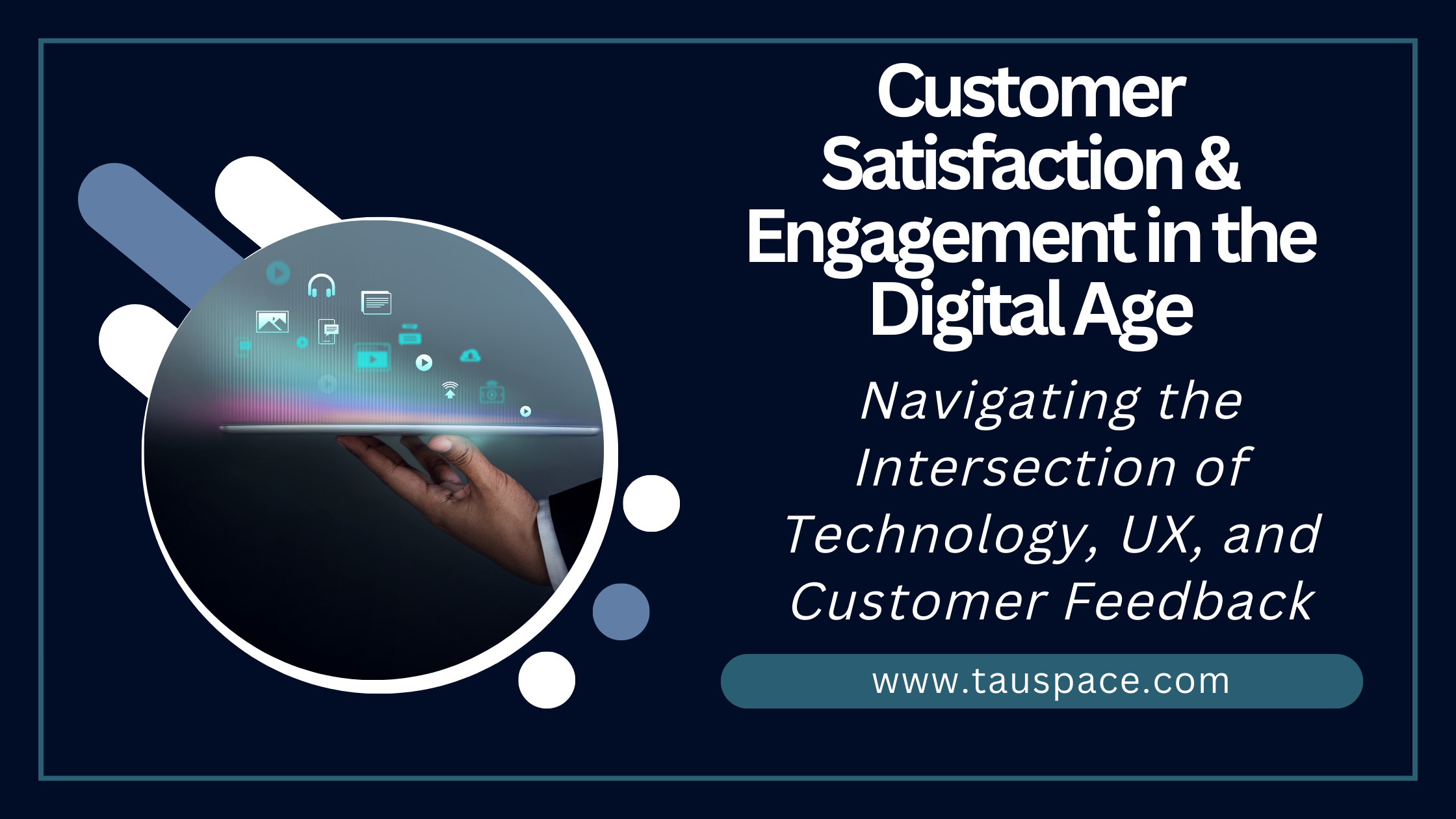Simply meeting customer needs is no longer enough. Businesses need to cultivate engaged customers, brand advocates who not only feel good about their experiences but actively connect with the brand, driving loyalty and growth.
Customer satisfaction refers to a customer’s overall assessment of their experience with a brand, product, or service. It’s a static measure of whether their needs were met and expectations fulfilled. High satisfaction translates to positive word-of-mouth, repeat purchases, and brand loyalty. However, the high competition levels of today means that satisfaction alone is no longer enough.
Customer engagement, on the other hand, is a dynamic process of active interaction and emotional connection between a customer and a brand. It’s about going beyond mere satisfaction to build a two-way relationship fuelled by positive emotions, shared values, and meaningful experiences. Engaged customers are advocates, promoters, and co-creators, actively participating in the brand’s journey.
So, how can telcos cultivate this powerful duo? This blog will highlight four key strategies.
Personalisation: Customise the Journey, Not Just the Product
Personalisation and customisation are increasingly important strategies for telecoms to enhance customer engagement and satisfaction by tailoring experiences to individual preferences and needs. Leveraging data and insights to tailor experiences to individual preferences fosters a sense of connection and value. This can be established through:
- Data-driven Personalisation: Implementing data-driven personalisation involves two key components: customer profiling and behavioural tracking. Customer profiling entails gathering and analysing data on individual customers’ demographics, behaviours, and preferences to create comprehensive profiles. This enables organisations to tailor experiences more accurately. Behavioural tracking utilises technologies like cookies and analytics tools to understand customer behaviour across touchpoints, then personalise content, recommendations, and offers based on customers’ interactions with digital properties.
- Dynamic Content Delivery: This can involve leveraging Content Management Systems (CMS) and A/B testing/personalisation engines. CMS platforms supporting dynamic content enable personalised content delivery based on user preferences, browsing history, or location. Integration with Customer Data Platforms (CDPs) or CRM systems enhances targeted content delivery scalability. A/B testing and personalisation engines enable experimentation with content variations and algorithms to optimise personalisation efforts.
- Product recommendations: Which leverage collaborative filtering and recommendation algorithms, such as machine learning-based collaborative and content-based filtering. These algorithms generate personalised product suggestions based on customers’ past purchases, browsing history, and preferences. Organisations can utilise recommendation engines to drive upsells, cross-sells, and repeat purchases. Implementing real-time recommendation systems enables personalised suggestions to customers during their interaction with digital platforms like e-commerce websites or mobile apps.
- Contextual Messaging and Communication: Contextual messaging and communication involve utilising marketing automation platforms for targeted communications and personalised email campaigns. Marketing automation supports contextual messaging based on customers’ current context, like location or device, ensuring relevant messages reach them. Organisations can orchestrate multi-channel marketing campaigns for timely and location-specific messaging. Implementing email marketing platforms with advanced segmentation and personalisation enables email campaigns tailored to individual recipients. Leveraging customer data and behavioural triggers helps create dynamic email content driving engagement and conversions.
User Experience Design: Frictionless Journeys, Delighted Customers
User Experience (UX) design is crucial for creating digital products and services that are intuitive, efficient, and enjoyable for users to interact with. Here’s an expansion on how telcos can leverage technology to enhance UX design:
- User Research and Testing involve implementing remote user testing platforms for usability testing with diverse participants, along with analytics and heat mapping tools to analyse user behaviour and interaction patterns.
- Accessibility and Inclusive Design entail conducting accessibility audits and utilising testing tools to ensure compliance with accessibility standards, alongside integrating inclusive design practices to prioritise usability for users with diverse needs.
- Design Systems and Component Libraries involve developing centralised repositories of reusable design elements and patterns, accelerating design workflows and maintaining brand consistency.
- Collaborative Design Tools enable real-time collaboration among designers, developers, and stakeholders, facilitating communication and documentation of design decisions.
Omni-Channel Experience: Seamlessly Connecting the Dots
An omni-channel experience involves providing seamless and consistent interactions across multiple channels, both digital and physical, to create a unified and integrated customer journey. Telcos can implement the following tactics:
- Unified Customer Data Management involves implementing Customer Data Platforms (CDPs) and integrating them with CRM and ERP systems. CDPs aggregate and centralise customer data from various touchpoints, facilitating personalised interactions across channels. Integration with CRM and ERP systems synchronizes customer data, ensuring a holistic understanding of customer interactions.
- Omni-channel Commerce Platforms encompass Unified Commerce Solutions and Mobile Point-of-Sale (mPOS) Systems. Unified commerce platforms manage all sales channels from a single platform, ensuring consistent pricing and product availability. mPOS systems empower sales associates with mobile devices to process transactions and access inventory information, enhancing customer service.
- Digital Engagement Channels include Social Media Integration and Live Chat/Messaging Apps. Social media integration allows real-time engagement across channels, while live chat and messaging apps offer instant assistance and support to customers, reducing friction in the purchase process. Integration with chatbots and AI-driven interfaces enhances support operations and provides personalised assistance.
Finally, telcos should ensure consistent brand messaging across communication platforms and utilise analytics and insights to enhance message effectiveness.
Customer Feedback and Voice of Customer Programmes: Listening and Responding
Listening to and understanding customer feedback is crucial for continuous improvement. Implementing VoC programs that gather feedback across various touchpoints allows telcos to identify areas for improvement and tailor their offerings to evolving customer needs.
- Multi-channel Feedback Collection involves implementing various tools and techniques to gather and analyse customer feedback across different touchpoints. This includes survey tools and platforms for structured feedback collection, feedback widgets and pop-ups for real-time input, and text and sentiment analysis using Natural Language Processing (NLP) techniques. Social media listening tools enable monitoring of brand mentions and sentiment across social channels.
- Closed-loop Feedback Processes entail deploying case management systems to track and manage customer feedback from submission to resolution, along with automated escalation and routing rules for prompt issue resolution. Real-time Feedback Dashboards utilise dashboard and reporting tools for visualising feedback data, providing actionable insights to decision-makers, including executive dashboards for CTOs and CIOs.
- Integration of Customer Feedback with Product Development involves capturing feedback directly within product interfaces and prioritising feedback for incorporation into product roadmaps. These processes ensure that customer needs are addressed throughout the product development lifecycle.
Conclusion
In conclusion, achieving customer satisfaction and engagement is not a one-time effort; it’s a continuous journey of refinement and adaptation. By prioritising personalisation, investing in user-centric design, crafting seamless omni-channel experiences, and actively listening to customer feedback, businesses can create an environment where customers feel valued, understood, and empowered. This holistic approach fosters not just fleeting satisfaction, but a deep and enduring engagement that translates into brand loyalty, advocacy, and sustainable success. It’s time for telcos to move beyond simply meeting needs and start cultivating meaningful connections with their customers.









